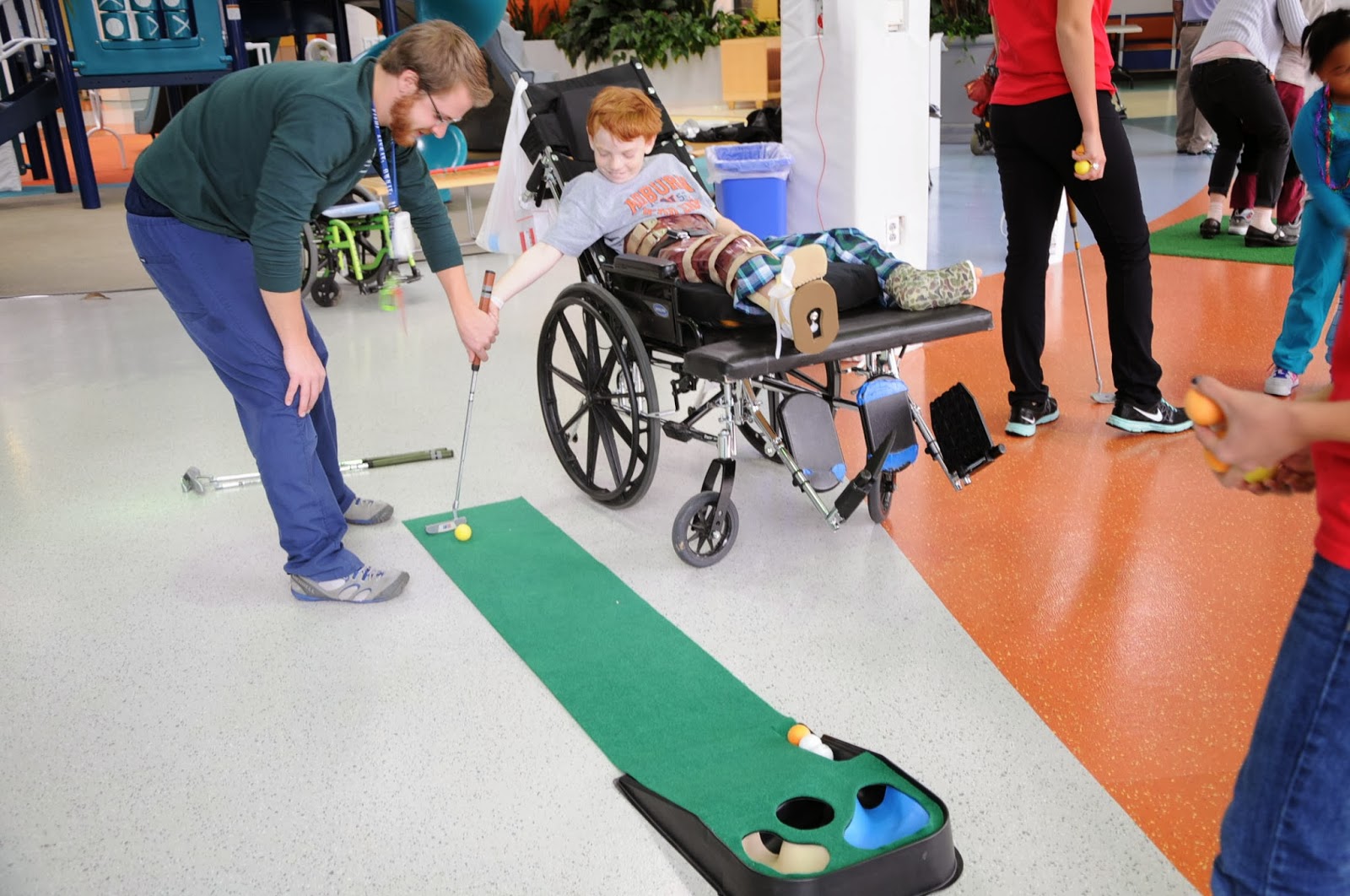There is one area of my golf instruction that we do not necessarily measure success in the same ways as the "everyday" player or the professional golfer that you watch on TV. I am sure that anyone who has read this blog regularly already knows that the area I am talking about is my time teaching the kids at Ranken Jordan Pediatric Bridge Hospital. To the kids there, a successful golf shot can be determined by any number of reasons, only a few of which actually involve the game of golf. In the past few weeks we have seen kids hit successful shots for the following reasons:
- Better angle of attack into the ball leading to a more consistent trajectory
- Less movement of the head while putting leading to better contact
- Being able to sit up in a wheelchair long enough to hit 5 golf shots
- Physically holding the golf club with 2 hands to hit the ball
- Standing up to hit the golf ball
- Having the ability to turn their head to look at the ball
I understand that everyone who plays this game has a different way of determining how successful or unsuccessful a particular shot is. This is one of the great things about the game --- anyone can play and enjoy golf regardless of the level of their play. What Phil Mickelson considers a "bad" shot is likely better than what many golfers consider a "good" shot. At Ranken Jordan one of the ways we determine the success of a shot is by measuring how much good playing the game is doing for each individual kid. In a lot of cases getting the ball airborne can be secondary, although you will never see a bigger smile on the face of a kid than the first time they see the ball they just hit sailing through the air!
Our junior golf program is nearing its 3 year anniversary (May 10, 2014 is the date). During that time we have seen many, many successful shots that would go unnoticed by anyone who was unaware of the entire story. I have been fortunate to go to the Masters, U.S. Open, Ryder Cup, PGA Championship, Bay Hill, etc., and have seen many great shots hit at each tournament. None of them compare to what I see weekly in a very special pediatric hospital. This morning I watched a young lady hit a ball all the way across Warner's Corner when only a few short months ago she barely had the strength to sit up in her wheelchair and allow me to help her swing the club. One of the single greatest shots, and maybe the greatest, I have ever seen happened just before Christmas 2012 when I watched a 13 year old boy get out of his wheelchair, take his first steps ever up to a putting green, and roll a few putts before walking back to his wheelchair. To this day I still am unable to tell that story with dry eyes! When I am out playing or practicing on my own game these are the shots I think of as I try to improve my game. What I see these kids do every week inspires me to be a better player and a better person. They have hit some miraculous shots and I am very lucky to be a small part of what they accomplish every week!



Into the lives of the young patients at Ranken Jordan three years ago walked a human being who loved GOLF (Game of Life First), who was a dream giver, and who practiced SFT (See it-Feel It-Trust It). Kevin, you are a God sent to these children. It is through Stephanie/Jeff Middleton and Zakki Blatt that I learned of you and your passion. Zakki=The Warrior is my hero who provides me the inspiration, drive, vision to work four days a week with First Tee participants in Ocala, FL. Friends ask if I enjoy it....I reply that I overdose on vitamins four days out of a weekly seven as I drink for the fountain of youth......youngsters keep us young. THANK YOU for what you do!
ReplyDeleteGreg, thank you very much for the kind words and also for all that you do with the First Tee! I've have heard a lot about your great work from Steph and Jeff. You are very correct when you say it is the kids who keep the passion level high for programs like this!
ReplyDelete